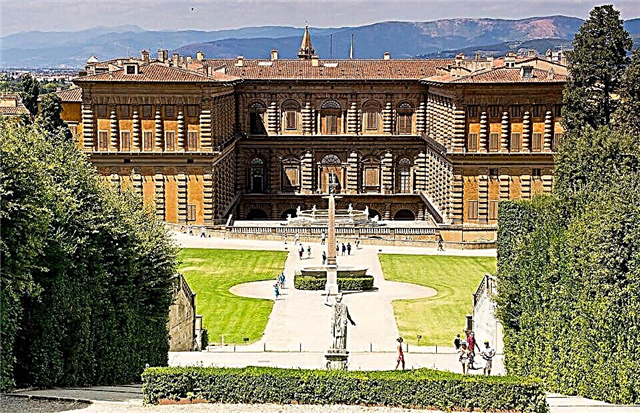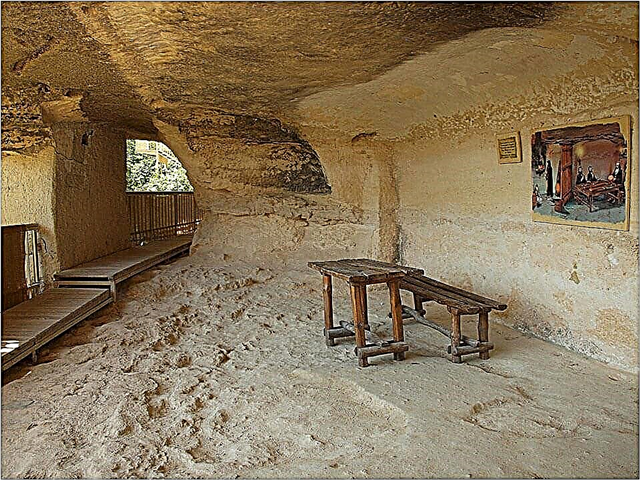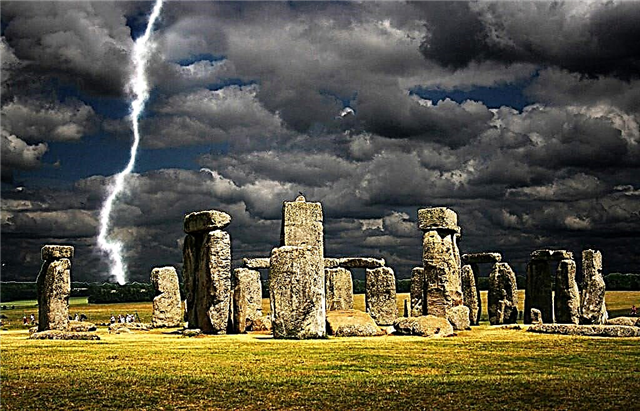Just 130 km from the capital of Great Britain, there is an ancient structure, the reason for the construction of which can not be named until now. Stonehenge is still shrouded in secrets and mystical mysteries, attracting not only curious tourists, but also paleontologists, historians, anthropologists, archaeologists and many other scientists.
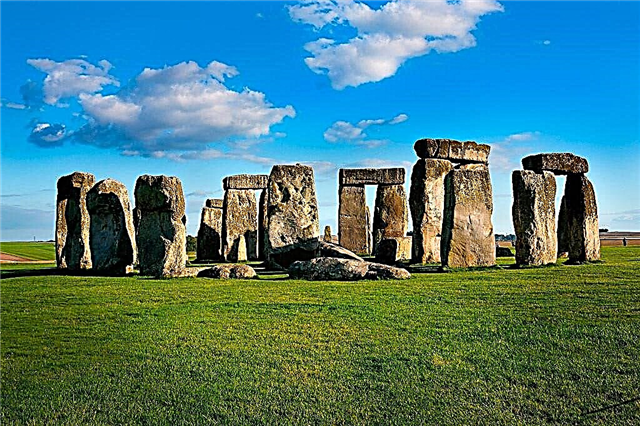
Where are
Giant stone giants have been guarding Stonehenge for more than 5 millennia, strictly guarding in secret the true reason for the creation of this original monument of antiquity. Located in the middle of the Cretaceous Salisbury Plateau, the structure of huge boulders covers an area of 107 square meters. km and is located in the middle of a marshy area near the Devonshire hills. The unsolved mysteries of ancient Stonehenge give reason to call it the eighth wonder of the world. It is not for nothing that Stonehenge is included in the list of UNESCO World Heritage Sites.

Origin of the word Stonehenge
Like the structure itself, the word "Stonehenge" has an ancient origin. It is believed that it comes from the combination of the Old English words "stan" and "hencg", which translates as a stone rod. In reality, the top stones are fixed on huge boulders in the form of rods. There is an assumption that the word "Stonehenge" has in its structure the Old English "hencen", which means "gallows" in translation, since the stone structures of two vertical blocks and the horizontal slab lying on them resemble medieval gallows.
These statues, reminiscent of medieval execution tools, were named trilita, which means three stones in Greek. There are five such triliths, weighing 50 tons each. In addition to huge triliths, 30 stone blocks weighing 25 tons each and 82 five-ton megaliths - large fragments of rocks, which in ancient times were used for the construction of structures with a cult purpose, were used in the creation of Stonehenge.

Grandiose structure
Stonehenge stone monoliths are laid out along the perimeter of a large circle. On top of these blocks are huge stone slabs. Inside the circle are stone blocks of a larger size and covered with larger slabs, which are arranged in a horseshoe shape. In the inner part of this peculiar horseshoe, there are blue stones that form a kind of a smaller horseshoe.
Averubi and Silbury Hill
During the study of Stonehenge, even more ancient structures were discovered nearby - a huge circle laid out with stone vertical slabs - Averubi and Silbury Hill - a man-made cone-shaped mound reaching a height of 45 m.When studying these structures, they came to an interesting conclusion that they are all connected between itself, making up a single whole. Scientists made such a conclusion on the basis that the distance between Stonehenge, Averubi and Silbury Hill is 20 km, and they themselves are located so that they are located in the corners of an equilateral triangle.

Stonehenge riddles
None of the scientists can definitely say for what purpose and how exactly this stone structure was erected. It remains a mystery how, several centuries before the victory over Troy, multi-ton boulders were delivered to the site of the construction of Stonehenge, if the distance to the nearest rocks is 350 km. Even using modern construction equipment, it is not at all easy to deliver a stone block weighing 25 tons over such a distance, and how this was achieved in the II millennium BC is impossible to understand.

Trying to somehow explain the reason for the appearance of stone monoliths on a swampy plain, people composed legends and tales. According to one of them, the powerful sorcerer Marilyn brought legendary giants here by air to heal their wounds here. The British call Stonehenge "the dance of the giants". Indeed, the stones placed in a circle are associated with a round dance of giants holding hands.
Another Stonehenge mystery concerns the construction of a megalith over the intersection points of underground rivers. There are huge reserves of groundwater under Stonehenge. Their presence can be explained by the location of the stone structure in a swampy area, but how to explain how the ancient people managed to accurately position the megalith remains a mystery.

The construction of Stonehenge took about 2,000 years. Recently, archaeologists have found on the territory of this stone structure evidence of ancient wooden monumental buildings that were erected here 8000 years ago.
Cult place
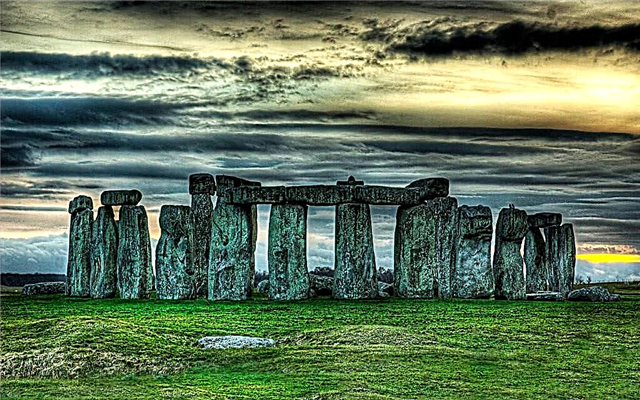
Later, on the territory of Stonehenge, two earthen ramparts were formed in the form of a circle with a diameter of about 115 meters, separated by a deep ditch dug by deer antlers. During excavations in some areas of the ditch, bones of large animals were found, and in some places the remains of burnt corpses. Based on the research conducted, they came to the conclusion that this place was cult and that sacrifices were carried out here. Many hundreds of years after the final construction of Stonehenge, it began to be used as a cemetery for cremated remains.
Stonehenge stones
Inside the moat are blue stones that were laid much later, around 1800 BC. e. Experts have established that these huge blocks were brought here from deposits located in different places, and were rearranged from one place to another several times. It is difficult to imagine how it was possible without modern technology. Outside the circle is a huge monolith called the fleeing monk's heel. On the opposite side of the shafts, opposite the "Heel" stone, there is a "Block-stone" inside.
Despite its name, the stone has nothing to do with sacrifices. Exposed to the influence of external natural factors, weathering products appeared on the stone - iron oxides, which have a blood-red color. These "bloody" spots gave the name to the stone.
In the center of Stonehenge, a block of green sandstone weighing about 6 tons was installed, which served as an altar.
The largest reconstruction of Stonehenge took place at the end of the 3rd millennium BC. The huge stone blocks were transported to the construction site from the southern hills, located 40 km from the construction site. Even such a small distance by today's standards is difficult to overcome in modern conditions in order to transport 30 huge stone blocks. What can we say about the delivery of boulders at the end of the 3rd millennium BC? The results of that ancient reconstruction have survived to this day in an almost unchanged form.

Purpose
Scientists of all countries are lost in conjecture about the purpose of Stonehenge. There are a number of assumptions and versions on this account. Some consider the gigantic structure to be an ancient observatory, while others argue that the Druids performed their cult rites here. It is believed that Stonehenge was built as a landing site for alien ships, and adherents of the existence of parallel dimensions are confident that a portal to other worlds opens here.
Some 5,000-year-old rock paintings discovered 14 km from Addis Ababa supposedly contain images that look like boulders of Stonehenge. In one of these ancient drawings, above the center of a stone sculpture, the image resembles a spaceship taking off.

Paranormal activity
Paranormal researchers claim that amazing things are happening near the complex. Once, during a tour of Stonehenge, the boy accidentally hit one of the stones with a piece of curved wire and fell unconscious.After this incident, the child could not come to his senses for a long time and for six months lost the ability to move his arms and legs.
While photographing Stonehenge in 1958, the photographer observed the rising columns of light above the huge boulders. And in 1968, one of the eyewitnesses said that he saw a ring of fire emanating from the stones of Stonehenge, in which there was a bright luminous object. In 1977, eyewitnesses managed to film a UFO squadron over the megalith on a video camera, and this video was shown on all British television channels. Interestingly, while observing unidentified objects, the compass broke and the portable TV set went out of order.

In the Stonehenge area, scientists have repeatedly heard clicking sounds and strange buzzing of unknown origin. Many scientists argue that the reason for such phenomena lies in the strong magnetic field propagating around Stonehenge. Surprisingly, the compass needle, which should point to the south, always turns towards the center of the megalith, no matter which side of the structure you stop in. Another strange phenomenon is difficult to explain. If you knock on one of the stones in a certain way, then the sound will spread to all the stones, although they are not connected with each other.
Scientists' versions
The English architect of the 17th century Inigo Jones, studying the structure, came to the conclusion that the structure of Stonehenge resembles the architecture of ancient times and suggested that these are the ruins of an ancient Roman temple. Another version indicates that the pagan queen Boadicea, who fought with the Romans, was buried on the territory of Stonehenge. In this regard, there is an opinion that the leaders of ancient tribes were buried in Stonehenge.
Later, scientists suggested that Stonehenge was erected in order to accurately predict the time of lunar and solar eclipses, as well as the dates of the beginning of field work. The proof is the fact that on the day of the summer solstice at the time of sunrise, its ray passes exactly in the middle of this stone structure. However, this version was denied by skeptics, who claim that it was hardly justified to invest so much effort and money to make sure that there was an ordinary calendar and the changing seasons.
According to many scholars, Stonehenge was a place of pilgrimage and healing. Analysis of human bones found in burial places on the territory of stone structures showed that people buried here suffered from serious diseases. Soldiers wounded in battles, crippled and hopelessly sick aspired to the blue stones of Stonehenge, hoping to receive healing here. Many, without waiting for recovery, died and were buried here.

Ancient Stonehenge keeps many unsolved secrets. None of the stones has an inscription, drawing or any kind of mark. Scientists find it difficult to cling to anything. We have to build versions and put forward hypotheses and assumptions. It is worth noting that similar structures made of stone blocks can be found throughout Europe and on individual islands, although in their scale they are clearly inferior to Stonehenge.
Huge boulders of Stonehenge attract tourists and fans of mystery and enigma. Some strive to look at the ancient buildings, while others believe that by touching the ancient stones, they will gain the vitality and energy that is hidden in Stonehenge.
Summer solstice festival
Every year, thousands of pilgrims gather near this mysterious stone structure on the day of the summer solstice to celebrate the festival of the same name. This pagan rite dates back over a thousand years. The participants of the celebration adorn their heads with wreaths and wear their best outfits. Many of those present consider themselves to be pagans who worship the sun. Others call themselves descendants of the Druids. All of them greet the morning sun with joyful screams, songs and dances to mark the longest day of the year.



